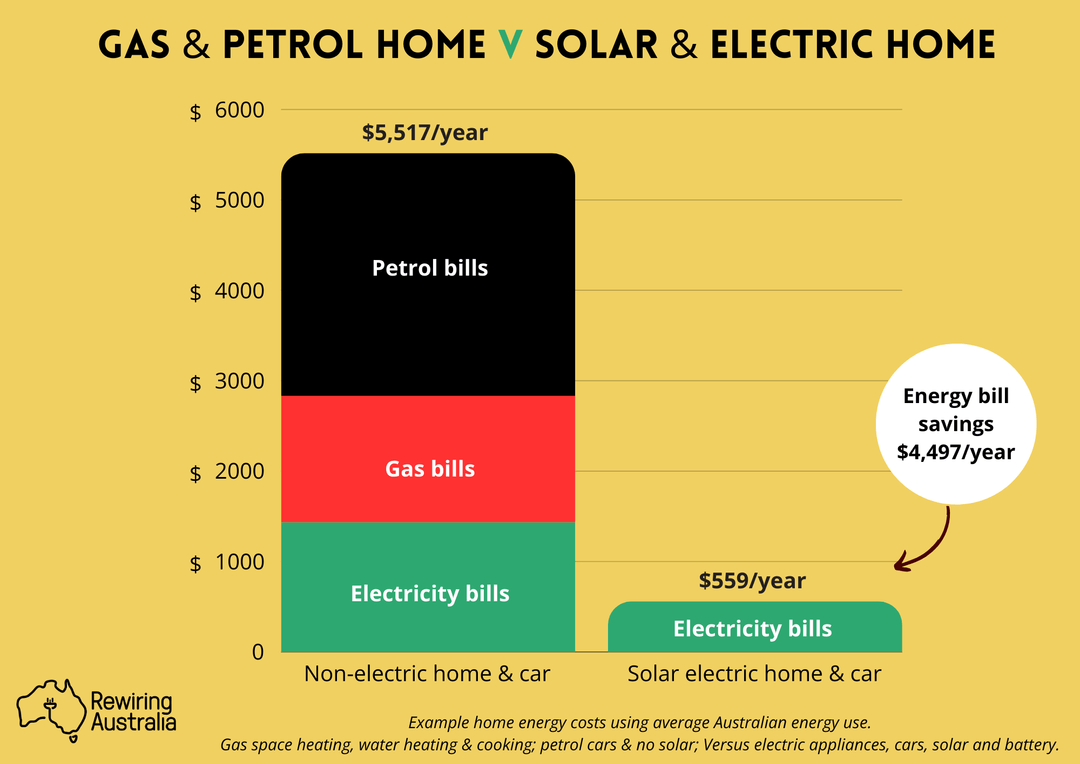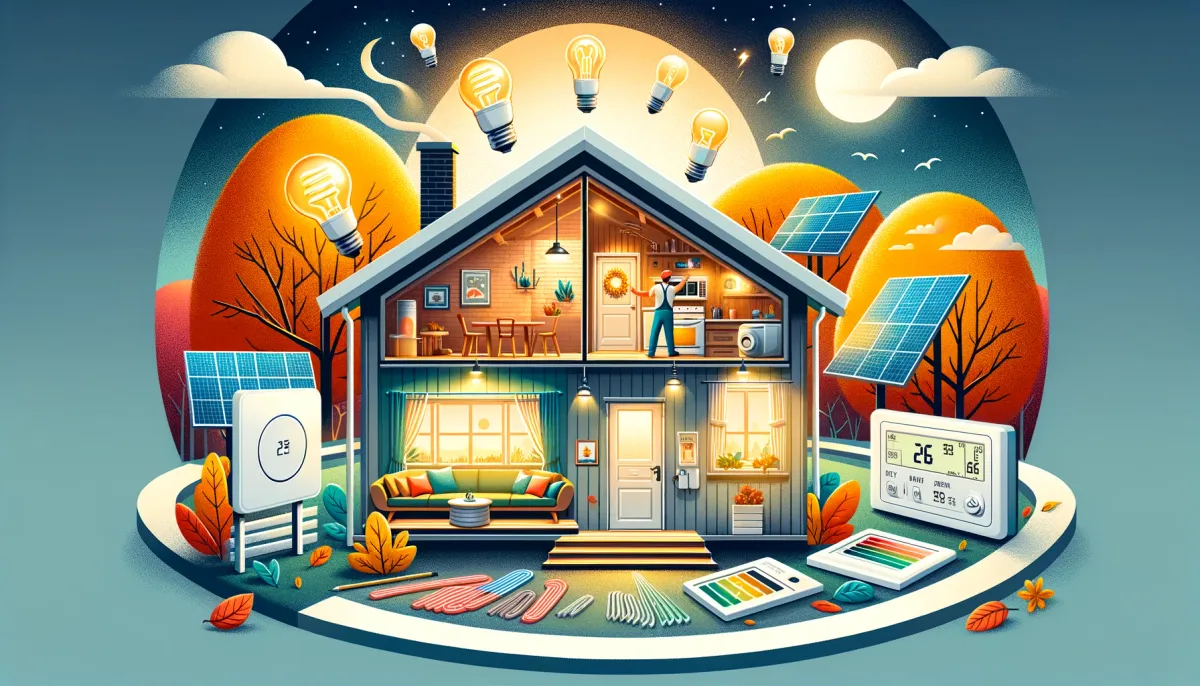Here's the game you didn't know you needed to play
Electricity distribution networks are complicated. So are the games based on them.
Electrify Everything! Saul Griffith's Electricity Australia has released an ambitious plan to finance the energy transition for Australian households

It's been another big month in the retail energy marketplace, with the release of new industry reports that further define the incredible renewables transition now in full swing in Australia. They also highlight the serious problems still to be solved in scaling renewable generation and storage.
Also, this month we saw an innovative proposal from Rewiring Australia for a government-backed financing solution to support Australian households to 'Electricity Everything' in their households while harnessing solar, battery and electric vehicles to drive down energy bills and fuel costs.
It may come as a bit of a shock to many that the Clean Energy Council's recently released 2023 report, indicates that renewables now account for almost 40% of Australian generation capacity.
Renewable energy accounted for 39.4 per cent of Australia’s total electricity generation in 2023
The Clean Energy Investor Group's Energy Storage Financeability report explores serious challenges in financing the storage elements required to support the renewables transition. By 2030, we'll need about 7x the battery storage capacity we have today and nearly 20x by 2050.
Most of this is projected to be domestic batteries, not grid-scale- storage, which begs the question of how cash-strapped households already under significant cost-of-living pressure are expected to finance this.
Could the solution be a government-backed HECS-style financing scheme? Saul Griffith's team at Rewiring Australia think so.
In other news, this month, the Australian Energy Regulator and the Essential Services Commission in VIC have released their draft determinations for Default Market Offer and Victorian Default Offer pricing for the financial year 2024-25. The news is not all good, but in general, it signals that retail prices are coming down.
In times like now, when market prices are unwinding, retailers rely more than ever on consumer inertia to keep their P&L statements fat. Wholesale prices are now well down from the dizzy heights they reached in late 2022 last year, and the price reductions are beginning to creep through into retailer offers. However, all a retailer has to do is hold off on the price decrease to improve their profitability, so now more than ever, it is essential to shop around to make sure you stay on the leading edge as energy price decreases finally roll through the market.
That means checking the alternative options across the market, or having Bill Hero do it for you.

Not a subscriber yet? What are you waiting for! Never overpay for energy again! Bill Hero automatically compares every bill to help keep you always on the best priced plan.
Electrify Australia has a plan
Things are accelerating for Australian renewables, but unfortunately, they are not quick enough to meet the Renewable Energy Target commitments.
The Clean Energy Council published its annual market update for 2023, highlighting that a record 5.9 GW of new renewable generation capacity was added to the grid in 2023, making renewables now account for just under 40% of Australia's total electricity generation capacity.
Privately owned (and financed) domestic rooftop solar, continues to lead the renewable energy transition, representing 3.1 GW of that new capacity, with 2.8 GW from utility-scale renewable generation.
However, renewables will need to more than double over the next 6 years to meet the Federal Government target of 82% renewables by 2030, so there is a long way to go. In its Draft Integrated Systems Plan (DISP) released in late 2023, AEMO indicated Australia needs at least 6 GW of new utility-scale capacity in the National Electricity Market each year to meet the 82% target — 2.8 GW of new capacity in 2023 is a good number, but a rapid acceleration in investment and deployment is required.
The Renewable Energy Target (RET) target is to add 33,000 GWh of renewable generation every year until 2030, aiming for a total generation capacity of 82% renewables by 2030.
This is an enormous project, and it also needs storage to make it work. As the Clean Energy Investor Group said in their Energy Storage Financability report: "There can be no clean energy transition without storage". Lots of storage.
AEMO's Draft Integrated System Plan says that 19 GW of storage will be needed by 2030, up from only 3 GW connected today — 1.4 GW of batteries and 1.6 GW of pumped hydro — with a total of 57GW required by 2050.
57 GW of battery storage is required by 2050, most of it projected to be supplied by households
Only 12% of this required storage capacity will be utility-scale — AEMO projects that the system will rely significantly on ‘behind-the-meter’ customer-owned domestic battery storage, a big ask for cash-strapped Austraklia households already under pressure significant pressure from the cost-of-living crisis.
Saul Griffith's lobby group Rewiring Australia has put forward a solution. This month, they launched a proposal for an ambitious government-backed financing scheme to do for the electrification of Australian homes what HECS does for higher education — make it much more accessible and much more affordable for all Australians to participate.
We are proposing a scheme for the government to help every Australian household finance the electrification of that household. That's solar and a battery, which Australian's are pretty familiar with, [and] it's also the electrification of the water heater, the space heater, installing a vehicle charger
The Electrify Everything Loan Scheme (EELS) proposes that households receive a government-backed loan secured on the property that doesn’t need to be repaid until the house is sold. This would ensure that all households could access solar and electrification regardless of income.
Households could receive the funds today to install solar, batteries, smart EV charging, water heating, induction cooking, split system air-con, and home efficiency upgrades. The loan would be indexed to inflation and households would pay it back when they can afford to, choosing to make repayments or simply wait until they next sell their house.
The EELS proposal also has some answers for renters and landlords
Landlords could also access EELS to upgrade rental properties without paying upfront, and we recommend complementary policies that further support renters, such as mandatory energy disclosure on bills and minimum efficiency standards.


The EELS scheme proposes government-financed electrification upgrades for solar, battery, home appliances, heating and cars, so households can enjoy lower energy expenditure across all those components, with loan payback occurring only on the sale of the property.
Rewiring Australia has priced the EELS proposal at $2.8 billion expenditure on budget over the next 3 years (2024 - 2027) to establish scheme and deliver complementary policies to reduce the costs of electrification for consumers:
Those numbers sound high, however our modelling shows that [under this plan] consumers will save $1.7 trillion by 2050, and if funded by flexible finance like EELS, the real cost to the budget will be just 1/20th of the consumer savings. In other words, this is a modest investment to unlock a lifetime of savings.
Energy consumers will be pleased to hear that, at last, some retail energy bill relief is in sight. The latest draft determination for the upcoming 'DMO 6' 2024/25 Default Market Offer pricing is down as much as 13% on the DMO 5 prices that were set a year ago and still apply for for the current financial year.

While we're all in favour of this indication that prices in the retail energy market are finally beginning to retreat, it is important to recognise that Default Offer prices are little more than an indicator of price movements in the market, and the actual DMO prices apply only to the less than 10 % of energy consumers actually on Default Offers.
The vast majority of energy consumers are on Market Offers, and as we explored back in Issue #17, the actual rates that energy consumers face are very different to the DMO rates that inevitably suck up all the oxygen in media analysis and discussions about energy pricing.

In Victoria, the Victorian Default Offer (VDO) is going through a similar process, and the current draft decision for FY 2024/25 proposes to reduce the VDO price by around $112, or 6.4%, for residential customers and around $266, or 7%, for small business customers from 1 July 2024.

Just as solar energy is not confined to affluent households, the uptake of electric vehicles is also accelerating faster in less affluent locations. The fuel cost savings that electric vehicles can provide are making the economics of EVs compelling for all households.
Further supporting the call to 'Electrify Everything' is a recent study from IEEFA which finds billions of dollars in potential energy savings from switching from fossil-powered appliances to electric, with hot water heaters being the single most significant opportunity


Similar to taking clunkers off the road under vehicle standards, the regime removes poor performing products from stores while giving consumers confidence that the energy efficiency of products they’re buying is genuine.
According to federal government data, regulating and labelling appliances has saved Australian businesses and households up to $18 billion in energy costs from fiscal year 2011/12 to 2021/22.
Up to 67 terawatt-hours of energy were saved, equivalent to electricity used by all Tasmanian, Northern Territory and South Australian households during the same period.

Peak gas?
Reduce consumption to reduce your bills. It's pretty simple really.
That’s where Bill Hero’s energy efficiency side-kick Energy Coach steps in.
Read the current March issue of the Energy Coach newsletter for actionable tips and tricks to minimise our energy consumption as wee start moving into Autumn.

Here’s yet another recent review from another happy Bill Hero subscriber.

Are you also a happy Bill Hero subscriber? Are you looking for fame and fortune via internet video!? It's easy to make your own video testimonial!
Got opinions about Electrifying Everything, or about DMO and VDO? Have your say in the comments, but please first read and understand our Community Guidelines.

Savings as a Service is the blog site and newsletter from Bill Hero. Subscribe now and get your energy savings tips and information delivered fresh to your inbox every month.